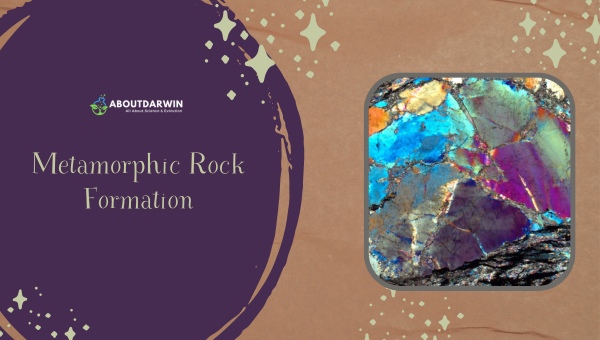Physical Address
304 North Cardinal St.
Dorchester Center, MA 02124
Deep within the Earth, a remarkable transformation occurs, giving rise to metamorphic rocks. These geological wonders emerge under intense heat and pressure, reshaping existing rocks into stunning new forms.
From the elegant textures of slate to the luxurious appeal of marble, metamorphic rocks showcase nature’s artistry.
As we explore their formation processes and diverse characteristics, the intricate relationship between heat, pressure, and rock metamorphism reveals a captivating story of Earth’s dynamic landscape. The journey into this geological phenomenon promises to unveil the secrets hidden beneath our feet.
Contents
Metamorphic rocks are formed from existing rocks that have been subjected to significant changes in their environment. These changes typically involve:
Also Read: Top 10 Fascinating Facts About Uranus
Metamorphic rocks are formed through a process called metamorphism, which involves the transformation of existing rocks (known as protoliths) due to significant changes in temperature, pressure, and chemical conditions. These rocks can originate from igneous, sedimentary, or even other metamorphic rocks.

The metamorphic process typically occurs deep within the Earth’s crust, where rocks are subjected to high heat (above 150-200 °C) and pressure (up to 100 megapascals) without melting.
These processes illustrate how is metamorphic rock formed and result in various types of metamorphic rocks, which can be classified into foliated (with aligned mineral grains) and non-foliated (without distinct layering) categories.
These mechanisms enhances our knowledge of metamorphic rock formation and the dynamic nature of Earth’s geology.
Metamorphic rocks are categorized into two main types based on their texture: foliated and non-foliated. This classification reflects the conditions under which they formed and their mineral composition.
Foliated metamorphic rocks exhibit a layered or banded appearance due to the alignment of mineral grains under directed pressure, while non-foliated rocks do not show such layering and are typically formed under uniform pressure conditions.
Foliated Metamorphic Rocks:
Non-Foliated Metamorphic Rocks:
The transformation of rocks into metamorphic forms is a remarkable process that highlights the dynamic nature of our planet. Metamorphic rock formation occurs under intense heat and pressure, altering the mineral composition and structure of existing rocks.
This process not only creates unique geological specimens, such as slate and marble, but also provides insights into Earth’s history and geological processes.
Recognizing the significance of metamorphic rocks enhances our understanding of the Earth’s evolution and the intricate forces at work beneath its surface.